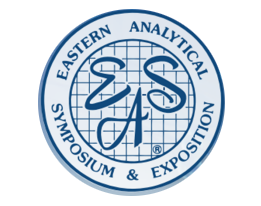One-Day Course
Sunday, Nov. 11; 8:30am – 5:00pm
Dr. Richard A. Henry, Independent Consultant, State College, PA
COURSE DESCRIPTION
Small-pore HPLC columns (about 100Å average pore diameter) may not be suitable for optimum separation when sample components exceed about 500-1,000 MW. Ideally, columns should have diameters large enough to allow rapid diffusion of target analytes throughout the particle internal pore volume. This practical short course will describe: 1) why having adequate pore diameter is critical to good HPLC column performance in any phase retention mode (RP, HILIC, etc.), and 2) how to detect pore exclusion for larger components and select the pore diameter that maximizes phase interaction and rapid mass transfer for all sample components.
WHO SHOULD ATTEND
This one-day course will benefit anyone developing HPLC methods for medium-to-high MW compounds and chromatographers with a practical working knowledge of HPLC techniques.
TOPICS
1. Overview of Key Variables that Determine Column Retention and Separation Performance
a. Sample
* Molecular weight and shape: 500 MW and larger
* Chemical properties
b. HPLC Column
* Particle diameter and pore diameter (average values)
* Stationary phase chemical properties
* Mobile phase solvents, buffers and additives
* System variables (temperature, flow rate, etc.)
2. How Pore Size and Geometry Impacts Separation of Larger Molecules
a. Pore shapes and diameters vary for different types of HPLC particles and columns
b. Analyte diameter increases with MW until molecules are excluded from column pores
c. HPLC retention and performance decreases as analyte/pore (a/p) diameter increases
d. Column performance examples for low and high a/p diameter ratios
3. Estimating Analyte Molecular Sizes Using Chromatographic Techniques
a. Use size exclusion chromatography (SEC) to screen samples early for pore exclusion
* Tabulate size exclusion constants of sample components during early column screening
* Employ mobile phases that are similar to analytical mobile phase conditions
b. Bypass use of SEC columns to perform size experiments directly on analytical HPLC columns
c. Based on SEC data, choose analytical column pores that minimize analyte exclusion
4. Use Analytical Columns with Optimized Pores for Screening in RP or Other HPLC Modes
5. Examples and Open Discussion of Advanced HPLC Method Development Techniques
ABOUT THE INSTRUCTOR
Dr. Richard (Dick) Henry received a B.S. in Chemistry from Juniata College and Ph.D. in Analytical Chemistry from The Pennsylvania State University. After a teaching and research appointment in chromatography at Purdue University with Professor L. B. Rogers, he joined DuPont at the Experimental Station in Wilmington, DE where he worked with Dr. J. J. Kirkland during the rapid development of modern HPLC. After 20 years in industry, Dr. Henry joined the chemistry faculty at Penn State University as Director of Analytical Laboratories and taught instrumental analysis to chemistry majors. He also founded Keystone Scientific Inc. to develop improved HPLC and SFC column technology. Dick remains active in consulting and teaching short courses in analytical separation.

